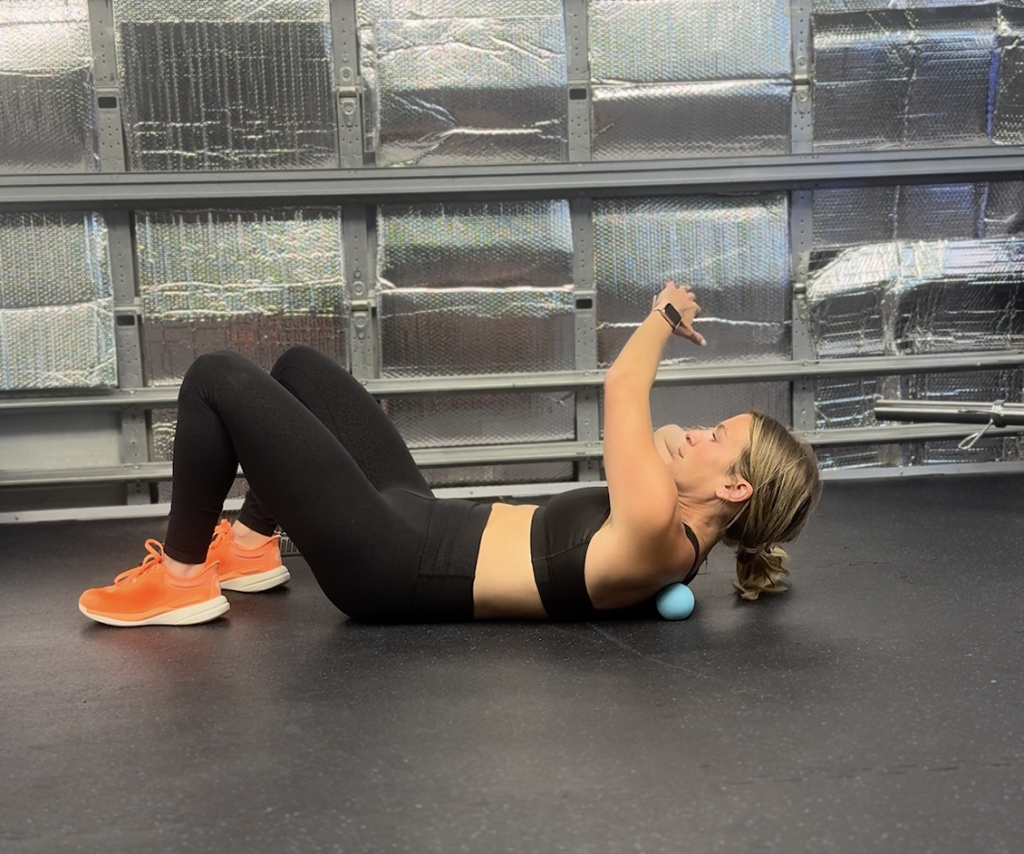Release those
upper Traps
Got Tight, Overactive Traps?
This Lacrosse Ball Release Can Help!
If you’re constantly feeling tension in your upper traps, you’re not alone—and you’re definitely not just imagining it. Whether it’s from stress, posture, or training habits, the upper traps tend to overwork and take on more than their fair share. The result? Neck pain, headaches, tight shoulders, and limited mobility.
Why Are Your Traps So Tight?
Often, it’s because they’re compensating for weaker or underactive muscles—like your lower traps, serratus anterior, and deep core. These muscles are crucial for stabilizing your shoulders and spine. When they’re not pulling their weight, your upper traps step in to help… but they’re not meant to carry the load on their own.
TIP: Before you start, do a quick check-in: shrug your shoulders up and down or reach one arm overhead. Notice how it feels. After releasing your traps, repeat the same move—you’ll usually feel lighter and have more range!

Over time, this compensation leads to:
Chronic tension
Poor shoulder mechanics
Limited overhead mobility
Increased risk of injury
Enter: The lacrosse ball release
Using a lacrosse ball to target these overactive traps can make a huge difference. Here’s how it works:
1.Lie down with a lacrosse ball placed right at the top of your shoulder, near your neck.
2. Find a tender spot (trust me, you’ll know when you hit it).
3. Hold pressure on the knot, then slowly move your arm overhead, across your body, or behind your back.
➔ This movement sends a signal to your brain that it’s safe to relax the muscle, allowing it to release the tension.
4. As you feel the tightness start to ease up, shift the ball slightly lower along the muscle to follow the path of tension and continue releasing other stuck spots.
➔ This movement sends a signal to your brain that it’s safe to relax the muscle, allowing it to release the tension.
4. As you feel the tightness start to ease up, shift the ball slightly lower along the muscle to follow the path of tension and continue releasing other stuck spots.
Release Those Traps
Continued:
As you feel the tightness start to ease up, shift the ball slightly lower along the muscle to follow the path of tension and continue releasing other stuck spots.
This is especially helpful if you:
✅ Shrug your shoulders during lifts (like presses, deadlifts, or pull-ups)
✅ Feel tightness or pain after long hours at a desk
✅ Struggle with proper shoulder blade movement and stability
Why It Matters
When your traps stop dominating every movement, it opens the door for better posture, stronger lifts, and a happier neck and upper back. Your lower traps, serratus anterior, and deep core muscles can finally engage the way they’re meant to, making your movements more efficient and less painful.
Aim to hold each tender spot for about 30–60 seconds, slowly moving your arm through a range of motion. Spend about 1–2 minutes per side, and you can repeat this 3–5 times per week or as needed based on how you feel.

After releasing tension, it’s important to wake up the muscles that should be doing the work. Try a few prone Y raises, dead bugs, or banded scapular retractions to activate your lower traps and core.
DISCLAIMER: If you experience sharp pain, tingling, or numbness during the release, ease off and consult with a medical professional. Gentle discomfort is normal—sharp pain is not.